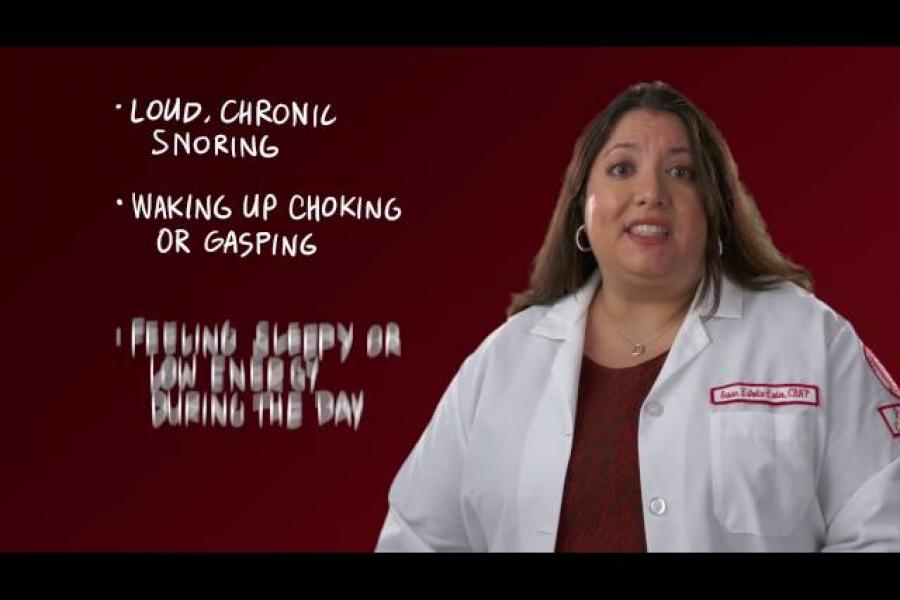What Is Sleep Apnea?
Sleep apnea is characterized by repeated interruptions in breathing throughout the sleep cycle — “apnea” means a temporary halt in breathing.
Obstructive sleep apnea is the most common form of sleep apnea. It occurs when soft tissue in the back of the throat collapses and blocks the airway, hindering oxygen intake.
Left untreated, sleep apnea can lead to serious problems, including chronic fatigue, depression, high blood pressure, heart attack, congestive heart failure, cardiac arrhythmia and stroke.
Causes
Common causes of sleep apnea include:
- Alcohol or sedative use
- Neck circumference — narrow airways are more common with thicker necks.
- Obesity
- Structural or anatomical issues — such as large tonsils or a narrow airway
Symptoms
Sleep apnea can affect anyone. Symptoms include:
- Daytime sleepiness — People frequently report feeling tired as a result of inadequate sleep, and may have a headache upon waking.
- Depression, irritability, and decreased memory, attention, concentration and verbal skills — These can all result from not getting enough rest.
- Gasping during sleep — Pauses in breathing can cause people to gasp for breath.
- Pauses in breathing — Patients may stop breathing for a few seconds to more than a minute while they sleep.
- Snoring loudly — Collapsed soft tissue in the back of the throat leads to snoring.
Treatment Options
Most often, sleep apnea is diagnosed with a sleep study, conducted either at home or at a specialized sleep center. Once diagnosed, patients can begin treatment that might include:
- Lifestyle changes — Obesity is a contributing factor to sleep apnea, so maintaining a healthy weight through diet and regular physical activity can help with the apnea. Limiting alcohol and quitting smoking can improve sleep apnea symptoms.
- Improving sleep hygiene — Creating a cool, dark sleep environment and limiting electronic use before bed can improve sleep quality.
If lifestyle changes aren’t enough, doctors may recommend additional treatments such as:
Airway Pressure Devices
The most common is a continuous positive airway pressure (CPAP) machine, which includes a mask that fits over the nose and/or mouth and blows air via a tube into the airways to keep them open during sleep. When CPAP is not effective or cannot be tolerated, patients can try expiratory positive airway pressure, a small device that fits over only the nostrils, or adaptive servo-ventilation, which uses pressure to maintain normal breathing.
Oral Appliances
Mandibular repositioning devices hold the jaw in place, preventing soft tissues from collapsing and blocking the airway. Tongue retaining devices hold the tongue in position to prevent it blocking the upper airway.
Upper Airway Stimulation Therapy (Inspire®)
This therapy involves an implanted device that delivers mild stimulation to the nerve that controls key airway muscles. By stimulating these muscles, your airway stays open while you sleep. Learn more about Upper Airway Stimulation >
Surgical Procedures
A variety of procedures can help reduce snoring or treat sleep apnea. They include:
- Removing nasal polyps, tonsils, adenoids and tissues prone to collapse
- Repairing a deviated septum
- Maxillomandibular advancement, which moves the upper and lower jaw forward to enlarge the airway
Ready for an Appointment?
If you're experiencing signs or symptoms of sleep apnea, schedule an appointment or call 800-TEMPLE-MED (800-836-7536) today.
Learn more about our doctors and care team who diagnose and treat sleep apnea.


